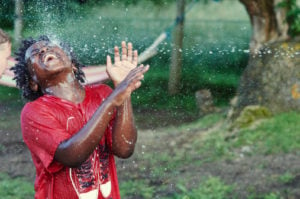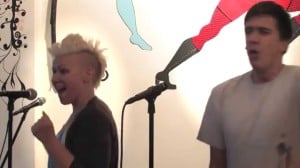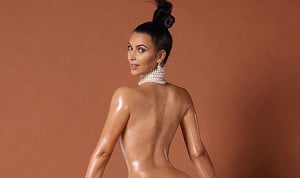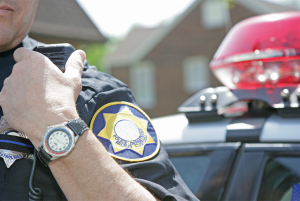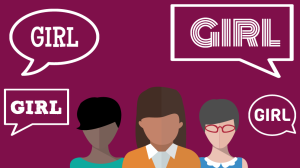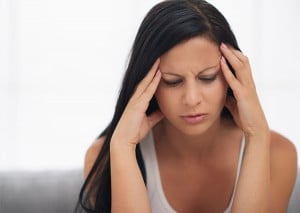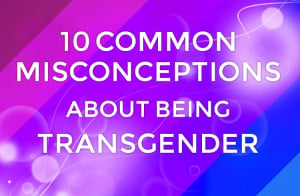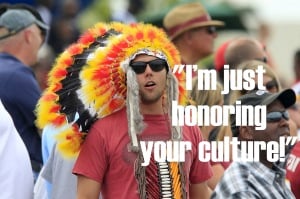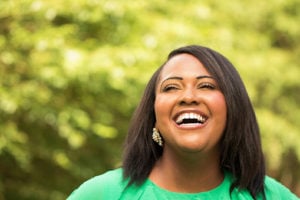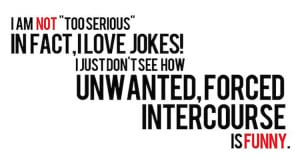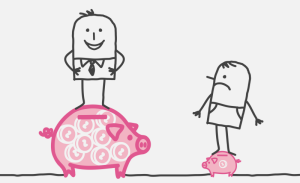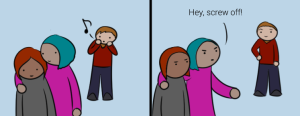When I spent a summer as a river guide, I met three people who’d abandoned their homes to live on the Rio Grande.
One lived out of a bus, another in a tent, and the last in his station wagon. They spent their days off rafting, kayaking, and hiking.
None of these men seemed to have much money.
They’d managed to live the dirtbag lifestyle many nature lovers dream of, leaving modern conveniences behind to pursue their passion: being outside. It’s easy to think that if these guys could make an outdoorsy life work, anybody could.
Unlike going to the movies, eating at a restaurant, or other “luxuries,” spending time in nature seems free. But not everyone has equal access.
As with travel, marginalized groups face a lot of barriers to outdoor recreation. This leaves the different types of outdoor fun to privileged folks.
Take race, for one. A 2016 study shows more than three in four US young adults who participate in outdoor activities are white. Nearly 80% of National Park visitors are, too.
In fact, I’m white. So were most of the people I raft-guided with.
I’ve built trails, sprayed noxious weeds, and cleaned up camping sites with a ton of white people over four seasons with the US Forest Service and a state park.
Like a lot of white people, I learned to ignore the whiteness of myself and other outdoor enthusiasts around me. I didn’t hear backpackers saying overtly racist things or see jerks physically blocking people of color from the trails, so I paid the homogeneity no mind.
It’s easy to overlook inequality when it’s systemic. It’s even easier when we benefit.
Ambreen Tariq runs Brown People Camping, an Instagram account that promotes diversity in public lands. She says she can feel like an outsider hiking and camping as a Muslim woman of color and immigrant.
“I felt like I had to establish myself – ‘Yeah, I’m a camper, I’m a hiker’ – that other people don’t do as much because they don’t have to question their belonging in that space,” Tariq tells Outside.
“Not only did I not have an authentic background doing activities in the outdoors, but my family didn’t do it, and I don’t have the legacy of being connected to a piece of land because we were always moving.”
We need to acknowledge outdoor recreation’s lack of diversity and inclusion.
Without understanding what’s keeping folks home, we blame oppressed individuals for “not taking initiative,” rather than addressing what may be preventing them from participating in certain activities.
To encourage people to take their own adventures, we might say well-meaning things like, “Anybody can do this if they’re motivated enough.”
This can be inspirational to someone who has the resources and leisurely time to explore the outdoors and needs a kick in the butt to do so. However, the message can be draining for folks who are raring to explore, but can’t.
We forget that society’s hierarchies of race, gender identity, sexual orientation, body size, and economic class don’t magically disappear in the forest. We deny that society actively discourages millions from playing outside, possibly stopping budding conservation activists.
As Tariq notes, “The more of us who can connect to it, the more we can protect it together.”
Here are a few barriers that marginalize people have to overcome to experience nature.
1. You Need Equipment
Our society treats nature as something we can enjoy independent of capitalism.
Theoretically, we go there to escape, and all we need are some sturdy shoes and maybe a sleeping bag.
The reality is more complicated. In the United States, outdoor recreation is a $646 billion industry. Open the pages of outdoor magazines, and you’ll find $150 trail running shoes, $500 tents and $4,000 mountain bikes.
We’ve created a culture of elitism around the outdoors, led by wealthy gear heads.
The Minnesota Land Trust’s Hansi Johnson, who’s white, recalls how he used to see people wearing jeans and flannel cross-country skiing growing up – a rare sight today.
Even if folks push past mainstream narratives and seek more affordable gear, cost is still a factor for low-income people.
If deals on used equipment or borrowing from a friend aren’t feasible in someone’s area, gear for a no-frills camping trip can still cost $500. Forget the cost of a car and gas to get to the campsite.
While do-it-yourself fixes for gear do exist – anybody else try cooking on a beer can camp stove? – they’re not universally known outside of backpacking circles. Ditto on cheap gear websites.
Those who make outdoor activities cheap often have a support system behind them.
As a freelancer with a college education, I’m perpetually broke, not poor. I couldn’t camp comfortably if I didn’t have the gear my parents gifted me back in high school.
No wonder 40% of participants in outdoor activities make $75,000-plus salaries a year.
The paradox that being poor is expensive is true: If you want to participate in a no-cost outdoor activity, you need to have money to invest in the gear initially.
This system reveals deeply entrenched classism. Ignoring it isn’t going to make it go away.
2. Outdoor Gear Doesn’t Fit Everyone
Cost is just one hurdle. Outdoor gear needs to fit.
Fitness culture overall reeks of fat-shaming, for one, which is reflected in workout clothing offerings.
Ultra-marathoner and cross-country coach Mirna Valerio says on Fat Girl Running that she struggles to find functional, flattering outfits that don’t pinch or cost a lot. In fact, most sportswear goes up to just a size twelve.
For those who’d prefer cycling: Only last year did anyone think to build a bike for someone who’s heavier than 300 pounds.
As with disability access, if the equipment isn’t readily available, people aren’t as likely to think that the outdoors are theirs to explore.
If we truly believe that everyone should be outside, we need to hold companies accountable for their limited views on body size.
3. Access to Natural Spaces Is Tangled in Historic Privilege and Oppression
In principle, public lands belong to all of us. In reality, select people get to enjoy it.
Carolyn Finney, geographer and author of Black Faces, White Spaces, explains about how national parks contribute to a larger story about who we are as a country, which historically excludes Black folks.
On Tavis Smiley, a PBS show hosted by Tavis Smiley, Finney reminds us that people of color do have a connection to natural spaces, but some of that land was stolen from them:
” …whether it’s the 400,000 acres of land that were originally given to freed enslaved Africans and then taken away, whether it’s all the native people that had to be removed from land in order for the Homestead Act to make sense, and then give it to European immigrants so that they could have their own plot of land.”
Finney continues, “This is part of the legacy of who we are and our issues of land and ownership and connection.”
Today, 80% of communities of color live “in areas where the proportion of remaining natural area is lower than the state average.” According to a study in the American Journal of Preventative Medicine, low-income neighborhoods are four and a half times less likely to have recreation facilities like parks in some states.
Furthermore, what we consider “untouched wilderness” is anything but.
As Kimberly Fanshier notes for Everyday Feminism, this concept centers around white people’s perspective and erases Indigenous populations who lived there for centuries before.
Many national parks and public lands were built on colonized lands. Even US National Parks reflect colonialism, where white leaders ignored Indigenous people in the area to establish.
Our society leverages natural spaces as a tool for capitalism and colonialism, while at the same time touted them as apolitical, free, and pure.
This erases our culpability for upholding the current system.
4. You Need to Know That Outdoor Recreation Is an Option
Families pass down their love for hours spent in the woods, including mine. It can be hard to try a new sport without that preexisting support.
Media paint a homogenous picture of who enjoys the outdoors, as well. They’re typically white, male, cisgender, slender, able-bodied, and assumed straight. Lore about Daniel Boone and mountain men perpetuate this image.
As Tariq notes to Outside, “It’s hard to see yourself in the outdoor community if you don’t physically see others like you, and you definitely aren’t seeing it in advertising.”
Other barriers stand in the way of people’s motivation to go outside.
For example, society doesn’t socialize women and femmes to be physically strong like it does with men. This reflects toxic binary expectations we have about gender that need to be changed.
I’ve had several close friends who’ve said their families actively discouraged them from playing outside growing up.
They had to move to a state with a more outdoor-focused culture to learn that, yes, they could rappel into caves and bushwhack through the wilderness with a full pack.
5. The Day-to-Day Culture Around Outdoor Recreation Is Exclusive
Society’s hierarchies don’t disappear at city limits.
Even when folks manage to go out and climb rocks, kayak a river, or bike down a mountain, people are still subject to unfair stereotyping and microaggressions.
Think of a group of women professors who went to Yosemite a few years ago. A handful of them write in Al Jazeera how park staff waved through those who were white and Latinx, but questioned all four Black professors at length.
They write:
“One of the Black professors was questioned about her college degrees, the title of her research project, and her university affiliation, and was asked to provide a faculty ID. The agents appeared incapable of imagining that a Black woman could hold a PhD and visit a research station for a scholarly event…This is heartbreaking, not least because Buffalo Soldiers, members of all-African-American regiments of the US Army, were among the nation’s first park rangers and built the first marked trail at Yosemite. Today only one percent of the park’s visitors are Black.”
On top of racism, rape culture persists.
Many outdoor jobs, like wildland firefighting and logging, remain hyper-masculine and painfully heteronormative.
The Department of Interior found evidence last year “of a long-term pattern of sexual harassment and hostile work environment” in the Grand Canyon’s River District. Female workers with agencies like the Forest Service across the country have revealed similar grievances.
***
The barriers to outdoor recreation are very real, and as with most things, marginalized folks suffer the most.
For those of us who manage to get outside, we need to go beyond calling ourselves lucky. We need to understand ourselves as privileged.
Nature doesn’t have to be a rich, white playground.
However, structures humans put in place – capitalism, colonialism, racism, sexism, and ableism – allow some people to access the outdoors and force others home.
Groups like Outdoor Afro, The Trail Posse, Brothers of Climbing, and the Venture Out Project are already doing heavy lifting to include people of color, queer folks, and others. We need to follow their lead.
We also need to celebrate marginalized people who enjoy the outdoors in their own way.
As Finney notes, we don’t hear enough about Black people’s stories. Consider the late conservationist John Francis who walked across the US and took a vow of silence for seventeen years to promote environmental stewardship.
There are histories that are rendered invisible as Finney points out:
“So part of it is the people who are in the position of power in terms of deciding what the ‘correct’ relationship to have to the natural environment can’t see us there doing the things that we do, whether we’re having barbecues, or we’re fishing, or we’re just hanging out doing whatever it is we do. We’re often not seen even though we’ve always been there.”
Tariq talks about how she’s gotten backlash for car-camping as “cheating.” Let’s acknowledge that there’s no single, right way to camp and the notion that there is, is part of the problem.
My favorite memories are outside.
I remember skating on a black, ice-covered lake for miles. Eating marshmallows on a ridge at midnight with my sister. Sleeping under the stars on a beach after a day rafting the Snake River.
Let’s work harder to fight inequity, so everyone can enjoy that privilege.
[do_widget id=’text-101′]
Emily Zak is a Contributing Writer at Everyday Feminism and a freelance writer based out of Santa Fe, New Mexico. She writes extensively on LGBTQIA+ issues, and her work has appeared on Ms. Online, Bitch Media, and Care2, among others. Follow Emily on Twitter @EmilyEZak. Read her articles here.
Search our 3000+ articles!
Read our articles about:
Our online racial justice training
Used by hundreds of universities, non-profits, and businesses.
Click to learn more
Most Read Articles
- « Previous
- 1
- …
- 30
- 31
- 32


